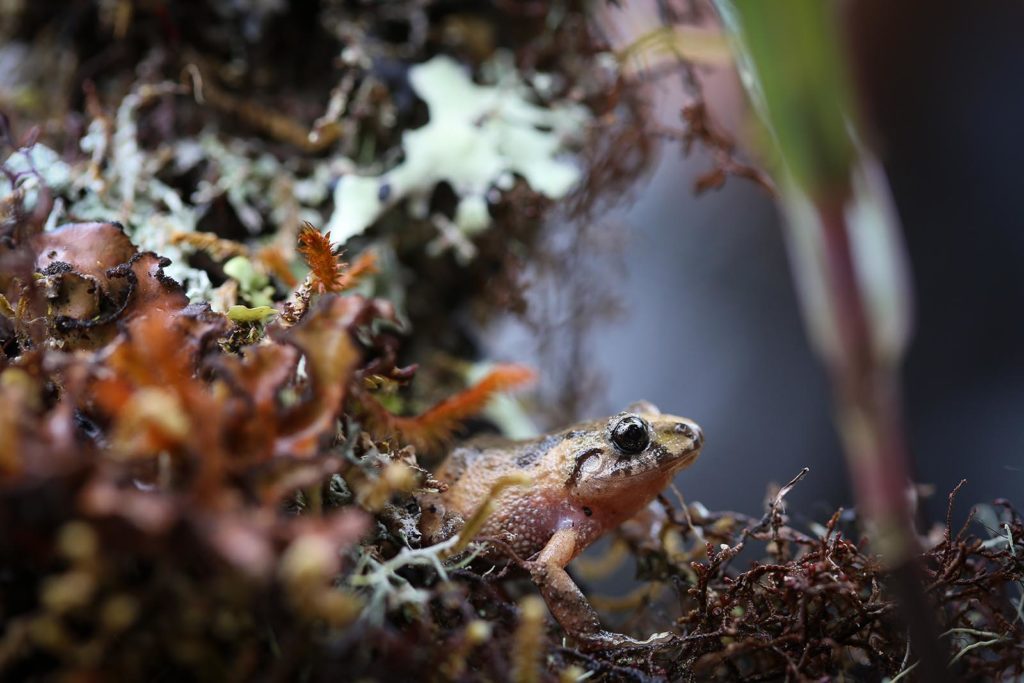There’s all sorts of wildlife right on the city’s doorstep in this increasingly popular national park.

As a photographer, birdwatcher and wildlife guide, it’s no surprise that one of my favourite places to visit near Bogotá is Chingaza National Park. Chingaza was first declared a National Park in 1977 and today covers approximately 76,600 hectares, with altitudes ranging from 800 to 4,020 metres above sea level. It is home to over 400 species of birds, 260 mammals, 44 amphibians and 29 reptiles, a mecca for wildlife viewing and nature enthusiasts.
After entering the park through its main entrance at Piedras Gordas, one of the first areas you will pass through immediately draws your attention – with its lack of shrubby vegetation it can easily be mistaken for the Scottish highlands. This area was once home to the Palacios Mine, owned by the Samper cement company. For over 50 years limestone was extracted from quarries and transported via cable car across the mountains. After years of environmental conflict, this property now makes up part of the Palacios Reserve, most recently made famous by the Colombian movie Monos which was filmed here. The ruins of the mine can still be seen from the roadside as you drive through the area.
Photos: Chantelle Du Plessis
As you climb up past the old mine you pass by awe-inspiring cliffs that drop down into the valley below, before entering through what I like to call the ‘gateway to the páramo.’ The vegetation changes from one minute to the next, offering breathtaking landscapes scattered with emblematic frailejón plants. The páramo here is one of the best areas in the park for sightings of the Spectacled Bear. Up until this year I had only seen bears on two occasions, but this year my company Andes EcoTours has already had nine sightings on our wildlife safaris through Chingaza.
Heading down the mountain, the páramo transforms into high-Andean cloud forest. Waterfalls can be seen gushing out of the mountainside as you drive towards the camp at Monterredondo. If you plan to spend the night in the park, this is your stop. The lodge offers shared dormitories and private rooms and there are well-established sites for camping if you bring your own tent. The nature trail from the camp will take you up through beautiful forest to a viewpoint overlooking the Chuza dam. This dam carries water 42 kilometres underground to the San Rafael dam in La Calera and supplies approximately 80% of the city of Bogotá with drinking water.

This sector of the park is also your best bet for sightings of the Andean Condor. After condors were hunted and poisoned to the point of near extinction throughout the country, a program was established in 1989 to reintroduce the species back into its natural habitat. Chingaza was the site of the first reintroduction, and up until recently there was only a single pair of condors living in the park. Registries just this week, however, have confirmed there are now four individuals roaming the skies. Cundinamarca means ‘land of the condor’, but Chingaza is still the only known location in the region with regular sightings of Colombia’s national bird.
What do other destinations in Colombia have on offer?
Visitors who spend the night in the park will have the time to continue past Monterredondo to the Chingaza Lagoon. Here you can enjoy a leisurely trail through native forest, past winding rivers and surrounded by vast grasslands embedded with cuy (wild guinea pigs) trails. If you keep your eyes open you may catch sight of one or two of them darting across the pathway.
This area is also the launching point for avid hikers wanting to cross Chingaza’s highest peaks along the Camino al Meta, a trail established three centuries ago by Catholic monks in order to evangelise to the natives. This forgotten route is one of the most challenging, yet least visited mountain passages in Colombia.
How to visit Chingaza national park
If you want to enter the park with your own car, you can still do so without a guide. But beginning next year, entry requirements will be tighter because of the actions of irresponsible visitors. This means that it will be harder to visit without being accompanied by registered guides and authorised operators. The park is also rolling out an online booking system that will streamline the reservation system. Visit the official Parques Nacionales website before you go to find out about current entry requirements.
If you have your own vehicle, guiding services can be contracted through one of the local community organizations from surrounding areas:
Corpochingaza: +57 (350) 804 4199
Suasie: +57 (313) 274 6186
Reserva Ecoturistica Palacios: +57 (310) 381 5504
Andes EcoTours also offers bilingual day trips, overnight safaris and multi-day treks through the park with transport included. More information about these tour options can be found at andesecotours.com
Chantelle is the co-founder of Andes EcoTours, a company offering nature trips to off-the-beaten path destinations near Bogotá











